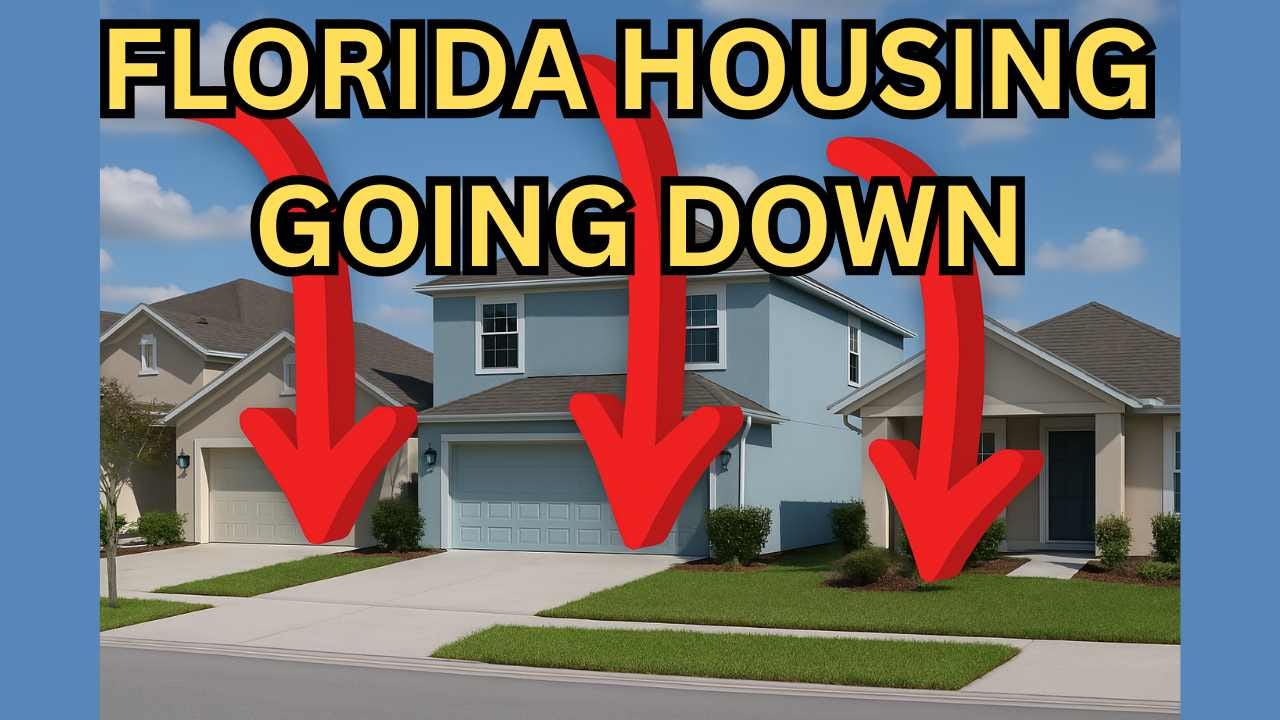Florida’s Housing Market Crash Explained
Why Landlords Are Selling, Prices Are Dropping, and What Buyers Need to Know
Florida’s real estate market is in the middle of a dramatic correction, one that’s starting to echo the early signs of the 2008 housing crash. Landlords across the state are now scrambling to sell properties that no longer produce positive cash flow, triggering what is being called the biggest selloff of rental homes since the last financial crisis.
As a result, housing inventory in Florida has skyrocketed. There are currently 177,000 homes for sale, the highest in the nation by far. To put that into perspective, Texas, which holds second place, has roughly 115,000 listings. Florida has 40 percent more. This surge in supply is beginning to tilt the market heavily in favor of buyers.
At the same time, rents are collapsing. In places like Parrish, Florida, Wall Street investors such as Silven Homes are being forced to slash rents just to attract tenants. One example shows a home purchased for $400,000 in 2022 that had to drop its monthly rent from $2,900 to $2,100. Even with that price cut, the home remains vacant. After accounting for maintenance, taxes, and insurance, many of these rental properties produce less than $16,000 in net income annually, and that’s before interest on loans. With rising debt costs, landlords are now losing money every month.
Home prices are falling just as quickly. Data from Reventure shows price drops across nearly every Florida metro area. Punta Gorda is down 8 percent year over year. Sarasota and North Port are down 6 percent. Cape Coral is seeing a decline of 7 to 8 percent. Naples is down 5 percent. These are significant year-over-year drops, especially considering that housing downturns typically take four to five years to fully play out. If this trend continues, Florida could be facing a prolonged decline in home values.
Builders are also making the situation worse for sellers. Companies like DR Horton are listing new construction homes for less than they were sold for just three or four years ago. In one DR Horton community, a four-bedroom, three-bath home with 2,300 square feet is now on the market for $378,000. That is roughly $168 per square foot, which is barely above replacement cost. Homes like these were selling for $450,000 to $460,000 just a few years ago.
Amid all this, Governor Ron DeSantis has introduced a bold proposal that could drastically change the future of homeownership in Florida. He is floating the idea of eliminating property taxes entirely or at least significantly reducing them. This would be proposed as a constitutional amendment in November 2026. In the meantime, DeSantis wants to offer Florida homeowners a $1,000 property tax rebate by December 2025.
DeSantis argues that people should not be paying what amounts to rent to the government just to live in their own homes. In a recent interview, he questioned why homeowners are taxed based on inflated market values when many cannot even sell at those prices. For example, a three-bedroom, three-bath house in St. Petersburg that was listed for $460,000 had its price slashed by nearly $100,000 and still isn’t selling. Yet its assessed value has jumped 83 percent over the past five years, and its tax bill increased from $2,800 to $6,500 a year.
DeSantis is pushing for tax relief that targets full-time Florida residents who homestead their properties. The proposal suggests reducing taxes for these owners by 20 to 40 percent, while increasing taxes on second homes and investment properties. The idea is that real homeowners should get relief, while investors continue to contribute more to the tax base. In practice, higher taxes on investors could force even more of them to sell, which may further lower home prices and increase affordability.
The Reventure Price Score, a tool that tracks housing market trends, gives even more insight into this unfolding crisis. Florida’s score dropped from 77 during the pandemic boom to just 27 today. This indicates a strong buyer’s market, with ongoing price declines expected throughout 2025 and likely into 2026.
Some sellers have yet to grasp what’s happening. One home purchased for $339,000 in early 2023 is now being listed for $354,000, even though prices have declined 5 to 7 percent and inventory has surged. That kind of denial is common in the early stages of a housing downturn, and it’s why these cycles typically take years to play out. The last housing crash took nearly five years, from 2007 to 2012, to reach the bottom.
Several areas in Florida are showing signs of continued weakness. Manatee County, south of Tampa, is one of the most at-risk regions. St. Petersburg is already down 4 percent year over year, and further drops are likely in 2025. Orlando is also entering a steep decline, with investor activity collapsing by 70 percent from the peak. In Miami, price drops haven’t fully hit yet, but they are expected soon as inventory climbs across Miami-Dade County.
Understanding where prices will drop next is not guesswork. Buyers and sellers can watch three indicators to anticipate market direction: the number of homes for sale compared to historical norms, the percentage of listings with price cuts, and how long homes sit on the market. High numbers in all three categories signal a market correction is underway.
The outlook for Florida’s housing market is clear. Rents are falling, prices are dropping, and investor interest is vanishing. While policy changes like tax rebates may soften the blow for homeowners, the market correction is still in its early stages. Buyers should proceed with caution and sellers should be realistic about current conditions. The market is shifting, and those who pay attention to the data will be the ones who come out ahead.


